Recent Water Damage Posts
What does the process for water cleanup involve?
11/14/2024 (Permalink)
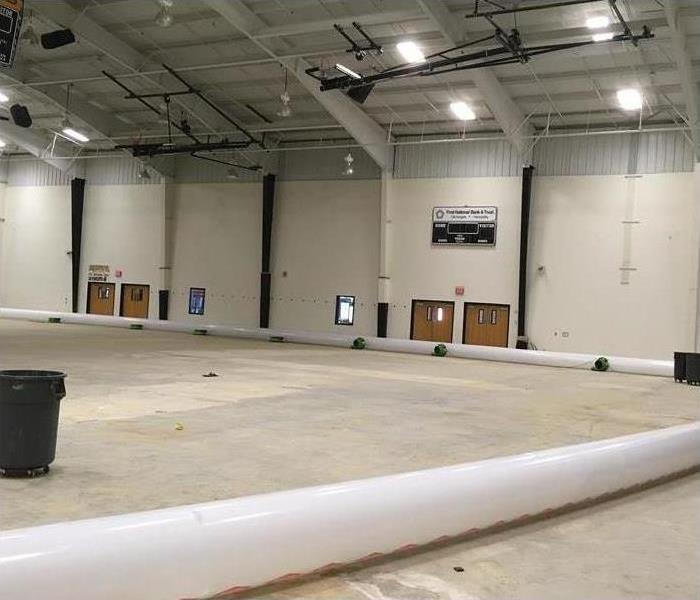 You're probably familiar with the idea of cleaning up after a spill, but did you know that water cleanup can be a complex process?
You're probably familiar with the idea of cleaning up after a spill, but did you know that water cleanup can be a complex process?
Water cleanup is one of the most common types of restoration services in the country. We see it every day, and we understand what goes into it. But for you, as a homeowner, water damage can be quite confusing. Where does the water come from? What does it look like? What does it do to your home?
We're here to help! In this blog post, we'll go over some of the basics of how a water cleanup company works: identifying where the source of the leak is coming from, assessing the damage caused by said water source, drying out your home properly so mold doesn't grow...you get it! By reading this article you'll be able to better understand what goes on during a typical water cleanup process so that if/when disaster strikes again, you'll know exactly what steps need to be taken immediately so that things don't get worse in the long run.
Step 1: Determine the source of the water
After you've noticed a water leak in your home or business, the first step is to determine exactly where the water is coming from. You can do this by checking for leaks or plumbing issues, roof or ceiling damage, and water damage on the ground and walls. Shutting off the water supply is important to prevent any more water from leaking out onto your property.
Step 2: Damage assessment
In step 2, you'll want to determine if the damage is from a burst pipe, flooding, or a leak. This will help you assess what kind of repairs need to be made and how much time and money it will take for your home to be restored.
It's also important to check for structural damage: Are there cracks in walls or ceilings? Is there water damage on the ceiling? If so, this could indicate that structural repairs are needed.
You should also inspect all electrical systems in your house for signs of damage as well as appliances such as refrigerators, dishwashers, washing machines, and dryers. These can experience significant financial loss due to water infiltration over time if not properly maintained during regular service intervals. You may also want to consider hiring an electrician if any wiring has been exposed due to the flooding event since they'll know exactly how much rewiring needs to be done before allowing yourself back into your home.
Step 3: Water extraction and dry out
The process of water extraction and dry out is the third step before you can start reconstructing your home, and it's essential to your safety. After you've removed as much standing water as possible, a professional will come in to remove any wet insulation, replace it with new insulation, and use fans and dehumidifiers to dry out the area as much as possible.
Step 4: Remove affected materials
Once you've removed as much of the water as possible, it's time to focus on removing any affected materials.
Here are some things you'll want to consider:
Remove damaged materials. This includes damaged carpeting, insulation, drywall, and furniture. For example, if the water is only in the kitchen and not the rest of your home then you may want to keep those rooms intact but rip out all of your sopping wet cabinets and countertops from that room. It can be overwhelming at first glance but this is a good time for an extra set of hands or two!
Remove moldy materials. As soon as possible after removing wet materials from your home or apartment (or office), throw away anything that was touched directly by water—including bookshelves full of books (yes).
Step 5: Drying and dehumidification
Drying out your property after a water loss is a crucial part of the cleanup process. This step includes using fans to circulate air, heaters to warm up the air, dehumidifiers and air purifiers to remove mold and mildew, and dehumidifiers and air purifiers to remove bacteria.
You're probably familiar with the idea of cleaning up after a spill, but did you know that water cleanup can be a complex process? You need to understand what processes are involved in order to make the most informed decision about your situation. Water cleanup isn't easy. You need to have the right equipment and knowledge, as well as make sure that you're not putting yourself or others in danger while doing it. We hope that this article has helped you understand what water cleanup looks like so that you can prepare for when your next flood or leak happens.
Understanding Category 3 Water Damage in Rogers County, OK
10/16/2024 (Permalink)
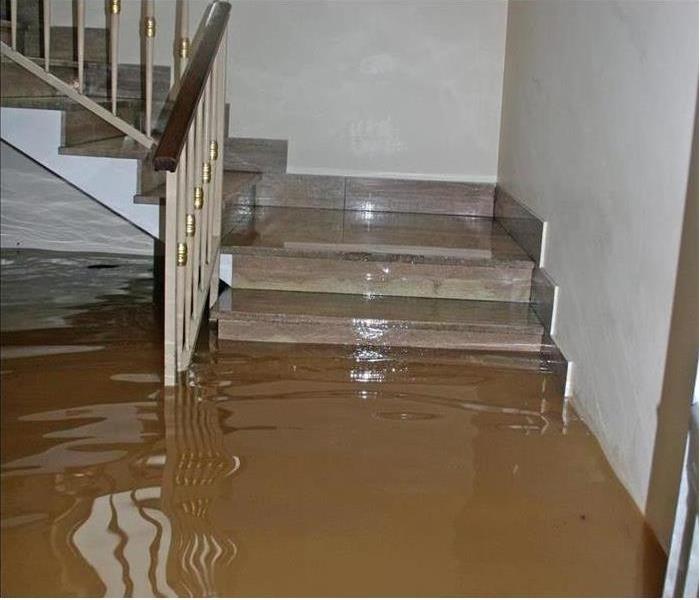 Don’t attempt to clean this on your own—call SERVPRO of Rogers County
Don’t attempt to clean this on your own—call SERVPRO of Rogers County
Category 3 water damage, or "black water," is the most dangerous type of water damage. It involves contaminated water filled with harmful bacteria and toxins, often from sources like sewage backups, floodwater, or long-standing stagnant water. This type of water can cause significant property damage and serious health risks, including infections and respiratory issues.
In Rogers County, OK, severe storms and flooding can lead to Category 3 water damage, especially in flood-prone areas. Whether it’s a business or home, fast action is essential to minimize damage and health hazards.
Health and Safety Risks of Category 3 Water
Exposure to Category 3 water can pose serious health risks. The water may contain pathogens such as viruses, bacteria, and parasites, which can cause infections, gastrointestinal illnesses, and other severe health issues. Anyone coming into contact with this water without proper protection risks being exposed to:
- Respiratory issues from inhaling harmful particles
- Skin infections from direct contact
- Serious illnesses from ingesting contaminated water
How SERVPRO of Rogers County Can Help
When faced with Category 3 water damage, professional cleanup is critical. At SERVPRO of Rogers County, our trained experts will:
- Safely remove contaminated water.
- Dispose of affected materials like carpets and drywall.
- Clean and disinfect your property thoroughly.
- Dry the area to prevent mold growth.
Don’t attempt to clean this on your own—call SERVPRO of Rogers County. We’re equipped to handle even the most severe water damage and will restore your property to a safe, livable condition. Reach out today, and we’ll take care of the rest!
Dealing with Sewage Backups
11/3/2023 (Permalink)
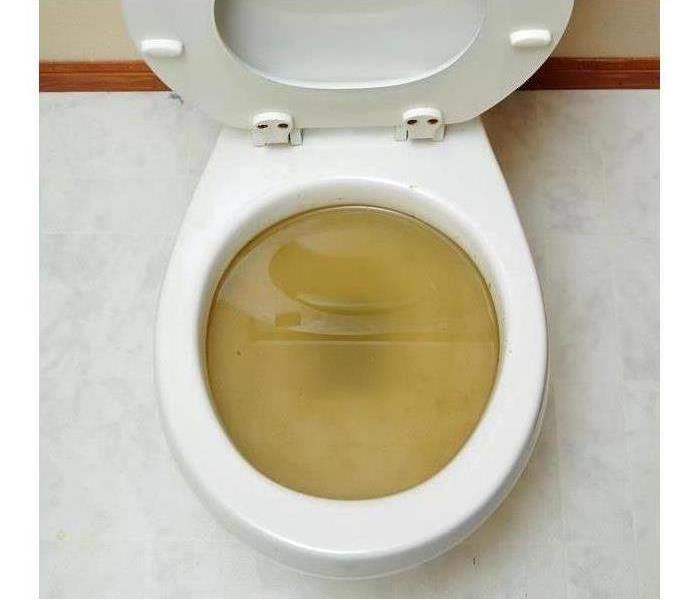 Sewage backup in a toilet
Sewage backup in a toilet
Title: Dealing with Sewage Backups: How SERVPRO Can Come to the Rescue
Sewage backups in your Catoosa, OK home is one of the most unpleasant and potentially hazardous situations a homeowner can face. These incidents can cause significant damage to your property, not to mention health risks due to exposure to harmful pathogens and contaminants. When a sewage backup occurs, you need immediate assistance to mitigate the damage and ensure your safety. That's where SERVPRO of Rogers County comes to the rescue.
Understanding Sewage Backups
Sewage backups can happen for various reasons, such as clogged sewer lines, heavy rainfall, or malfunctioning septic systems. When sewage backs up into your home, it can contaminate your living space with a toxic mix of waste, bacteria, and other harmful substances. Dealing with such a situation requires a professional touch, and that's where SERVPRO's expertise comes in.
1. Immediate Response: When sewage backs up into your home, time is of the essence. SERVPRO understands the urgency of the situation and responds promptly. Our 24/7 emergency services ensure that you don't have to wait, and they can arrive at your property swiftly to assess the damage and start the cleanup process.
2. Safety First: Dealing with sewage backups can expose you to harmful microorganisms and pathogens. SERVPRO's team is equipped with the necessary protective gear to ensure their safety and yours. They follow strict safety protocols and guidelines to minimize health risks during the cleanup process.
3. Professional Cleanup: SERVPRO professionals have the training and experience to handle sewage backups efficiently. They use specialized equipment and cleaning agents to remove sewage, sanitize affected areas, and ensure your home is safe and clean once more. Their expertise extends to both the visible damage and hidden moisture that can lead to long-term issues like mold growth.
Dealing with a sewage backup can be a stressful and challenging experience. SERVPRO of Rogers County's expertise and commitment to customer satisfaction can provide much-needed peace of mind during a difficult time. They have the knowledge, tools, and experience to handle the situation effectively, ensuring your property is restored to its former glory.
The Importance of Gutter Maintenance in Preventing Water Damage
10/18/2023 (Permalink)
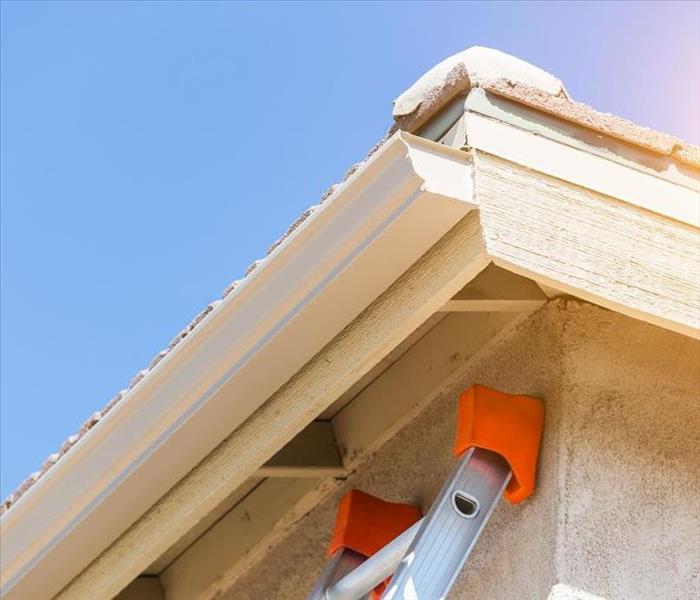 Always be sure to maintain your gutter system!
Always be sure to maintain your gutter system!
Gutters might not be the most glamorous part of your home, but they play a vital role in protecting it from water damage.
Neglecting your gutters can lead to a host of problems, from structural issues to mold growth and costly repairs. In this blog, we'll explore why regular gutter maintenance is crucial in preventing water damage to your home.
1. Water Diversion: Gutters are designed to channel rainwater away from your home. When it rains, gutters collect water from your roof and direct it to downspouts, which then carry it safely away from your foundation. Without proper gutter maintenance, water can overflow and accumulate near your home, leading to potential damage to your foundation, basement, or crawl space.
2. Preventing Roof Leaks: Clogged or damaged gutters can cause water to back up on your roof, leading to leaks and rot. Over time, this can compromise the structural integrity of your roof and result in costly repairs. By keeping your gutters clean and in good condition, you can safeguard your roof from damage.
3. Avoiding Basement Flooding: When rainwater isn't effectively directed away from your home, it can seep into your basement or crawl space. This can lead to flooding, causing damage to your belongings, structural issues, and even health hazards like mold growth. Regular gutter maintenance helps ensure that water is diverted away from these vulnerable areas.
4. Avoiding Ice Dams in Winter: In colder climates, the accumulation of ice dams on your roof can be a significant concern. Clogged gutters can contribute to ice dam formation, leading to water seeping under your shingles and causing further damage. Keeping your gutters clear can help prevent this winter headache.
Regular gutter maintenance is a simple and effective way to safeguard your Catoosa, OK home's structural integrity, protect your belongings, and maintain a safe and healthy living environment. By taking the time to care for your gutters, you're investing in the long-term well-being of your Catoosa, OK home.
Help! My Washing Machine is Leaking
11/4/2022 (Permalink)
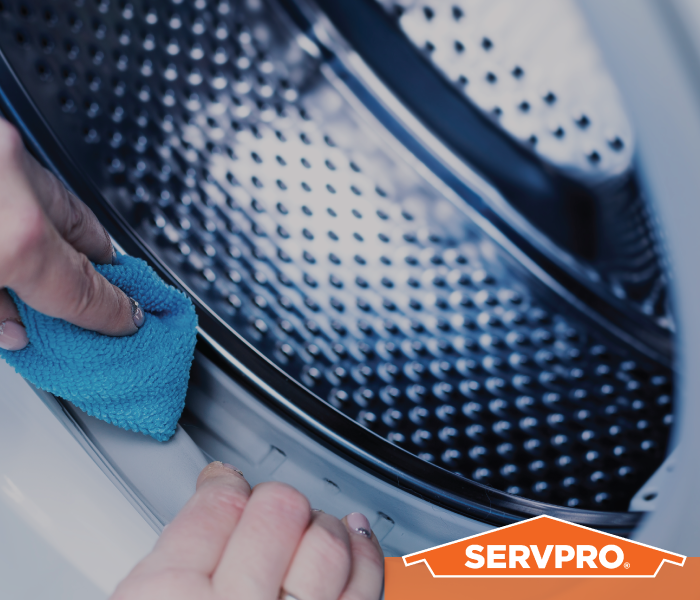 If you have a leaky washing machine, regardless of the reason, SERVPRO of Rogers County can help you clean up the mess
If you have a leaky washing machine, regardless of the reason, SERVPRO of Rogers County can help you clean up the mess
Help! My Washing Machine is Leaking
If your washing machine is leaking, you'll want to fix it as quickly as possible. That's because not only will you see water pooling up on the floor and stains from previous leaks in your laundry room, but also because this problem can lead to mold growth and other long-term issues. So, what causes a washing machine to leak? And how do we stop that leak from happening?
Reasons Your Washing Machine is Leaking
If your washing machine is leaking, you should be able to fix it yourself. The average washing machine holds about 15 gallons of water. This is a lot of water! If your washing machine is leaking, there are many reasons why it could be happening. Most of the time, a leaky washer can be fixed by either tightening a screw or replacing something that has worn out or broken.
No matter what type of washing machine you have, there are a number of reasons why it might be leaking.
- A clogged drain can cause water to leak out of your washing machine through the front door or from underneath the unit.
- A broken hose or hose fitting will also cause water to leak from your machine. Sometimes this is caused by using the wrong type of detergent or fabric softener; other times, the fittings themselves are faulty. If you've had a long history of leaks with your washing machine, it may be time for an upgrade!
- Finally—and most importantly—a broken pump can lead to serious amounts of leakage and damage to your Catoosa, OK home's flooring and walls (in addition to ruining clothes!).
If you feel like the repairs are beyond your abilities, reach out to a professional plumber in your area who can help diagnose and repair any issues with no problem at all!
Finding the Leak
To find out whether the source of the leak is your washing machine or some other problem, you should turn off your water supply at the main shutoff valve and then turn on all of your sinks and faucets throughout the house.
If you see water coming out of any faucet or sink, then it’s not a leak in your washing machine. The leak is somewhere else in your plumbing system and needs to be repaired quickly before major damage occurs.
If no water comes from any faucet or sink when turned on, then there may be something wrong with your washing machine.
If there is no leak after turning on all the faucets, then it's likely that your washing machine has a problem. The next step would be to turn off the water supply and drain out as much water as possible into buckets or other containers before calling a professional plumber.
If you have a leaky washing machine, regardless of the reason, SERVPRO of Rogers County can help you clean up the mess. Give us a call to get your Claremore home back up and running as fast as possible after a water, fire, or storm damage event!
What does the water cleanup process look like?
10/11/2022 (Permalink)
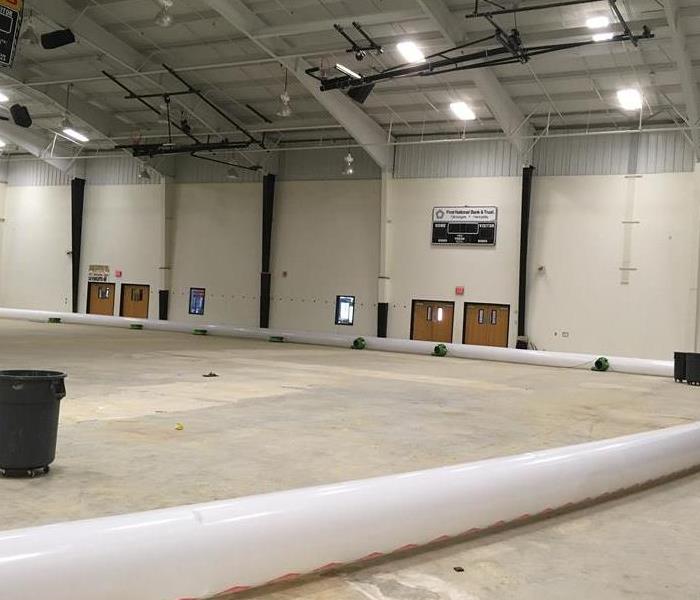 You're probably familiar with the idea of cleaning up after a spill, but did you know that water cleanup can be a complex process?
You're probably familiar with the idea of cleaning up after a spill, but did you know that water cleanup can be a complex process?
Water cleanup is one of the most common types of restoration services in the country. We see it every day, and we understand what goes into it. But for you, as a homeowner, water damage can be quite confusing. Where does the water come from? What does it look like? What does it do to your home?
We're here to help! In this blog post, we'll go over some of the basics of how a water cleanup company works: identifying where the source of the leak is coming from, assessing the damage caused by said water source, drying out your home properly so mold doesn't grow...you get it! By reading this article you'll be able to better understand what goes on during a typical water cleanup process so that if/when disaster strikes again, you'll know exactly what steps need to be taken immediately so that things don't get worse in the long run.
Step 1: Determine the source of the water
After you've noticed a water leak in your home or business, the first step is to determine exactly where the water is coming from. You can do this by checking for leaks or plumbing issues, roof or ceiling damage, and water damage on the ground and walls. Shutting off the water supply is important to prevent any more water from leaking out onto your property.
Step 2: Damage assessment
In step 2, you'll want to determine if the damage is from a burst pipe, flooding, or a leak. This will help you assess what kind of repairs need to be made and how much time and money it will take for your home to be restored.
It's also important to check for structural damage: Are there cracks in walls or ceilings? Is there water damage on the ceiling? If so, this could indicate that structural repairs are needed.
You should also inspect all electrical systems in your house for signs of damage as well as appliances such as refrigerators, dishwashers, washing machines, and dryers. These can experience significant financial loss due to water infiltration over time if not properly maintained during regular service intervals. You may also want to consider hiring an electrician if any wiring has been exposed due to the flooding event since they'll know exactly how much rewiring needs to be done before allowing yourself back into your home.
Step 3: Water extraction and dry out
The process of water extraction and dry out is the third step before you can start reconstructing your home, and it's essential to your safety. After you've removed as much standing water as possible, a professional will come in to remove any wet insulation, replace it with new insulation, and use fans and dehumidifiers to dry out the area as much as possible.
Step 4: Remove affected materials
Once you've removed as much of the water as possible, it's time to focus on removing any affected materials.
Here are some things you'll want to consider:
Remove damaged materials. This includes damaged carpeting, insulation, drywall, and furniture. For example, if the water is only in the kitchen and not the rest of your home then you may want to keep those rooms intact but rip out all of your sopping wet cabinets and countertops from that room. It can be overwhelming at first glance but this is a good time for an extra set of hands or two!
Remove moldy materials. As soon as possible after removing wet materials from your home or apartment (or office), throw away anything that was touched directly by water—including bookshelves full of books (yes).
Step 5: Drying and dehumidification
Drying out your property after a water loss is a crucial part of the cleanup process. This step includes using fans to circulate air, heaters to warm up the air, dehumidifiers and air purifiers to remove mold and mildew, and dehumidifiers and air purifiers to remove bacteria.
You're probably familiar with the idea of cleaning up after a spill, but did you know that water cleanup can be a complex process? You need to understand what processes are involved in order to make the most informed decision about your situation. Water cleanup isn't easy. You need to have the right equipment and knowledge, as well as make sure that you're not putting yourself or others in danger while doing it. We hope that this article has helped you understand what water cleanup looks like so that you can prepare for when your next flood or leak happens.
 You're probably familiar with the idea of cleaning up after a spill, but did you know that water cleanup can be a complex process?
You're probably familiar with the idea of cleaning up after a spill, but did you know that water cleanup can be a complex process?

 24/7 Emergency Service
24/7 Emergency Service




